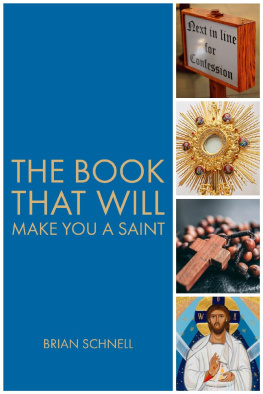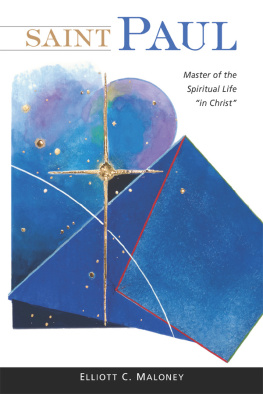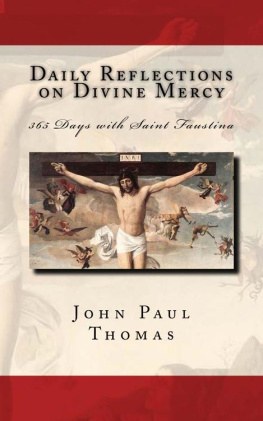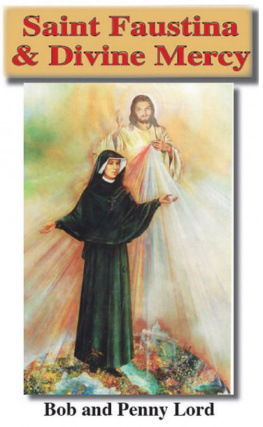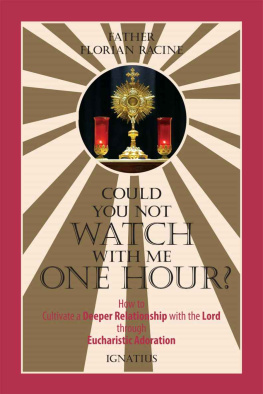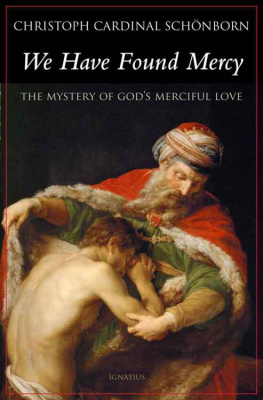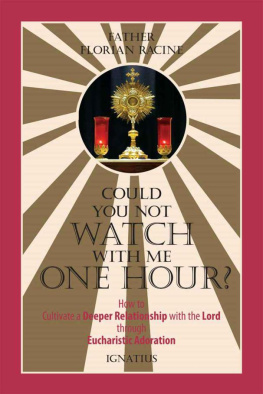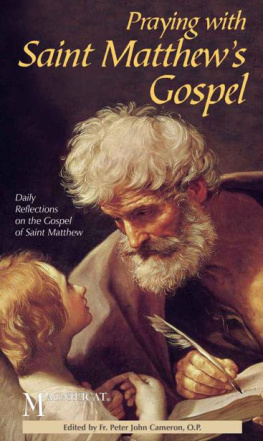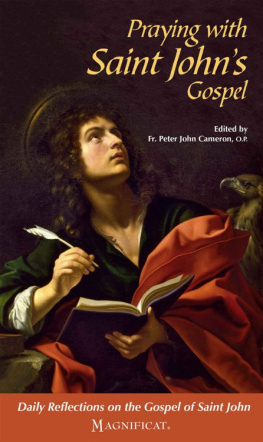The Book That Will Make You a Saint
Brian Schnell
Scripture citations, unless otherwise noted, are taken from the Revised Standard VersionCatholic Edition copyright 2006, Division of Christian Education of the National Council of the Churches of Christ in the United States of America. All rights reserved.
Excerpts from the English translation of the Catechism of the Catholic Church for use in the United States of America Copyright 1994, United States Catholic Conference, Inc. Libreria Editrice Vaticana. Used with permission.
Quotations from the Diary of Saint Faustina are taken from DIARY, Saint Maria Faustina Kowalska: Divine Mercy in My Soul 1987 Marian Fathers of the Immaculate Conception of the BVM, Stockbridge, MA 01263. All rights reserved. Used with permission.
Excerpts from the English translation of The Roman Missal 2010, International Commission on English in the Liturgy Corporation (ICEL). All rights reserved. Used with permission.
Next in Line for Confession photo by Shalone Cason on Unsplash.
Monstrance photo on Pixabay.
Rosary photo by James Coleman on Unsplash.
Divine Mercy Icon by Vivian Imbruglia . All rights reserved. Used with permission.
Cover design by Brian Schnell.
Copyright 2020 Brian Schnell
All rights reserved.
May the Virgin Marys Immaculate Conception be our health and protection .
Contents
Acknowledgements
This book would not have been possible without Lucas Pollice. He was forthright enough to make an off-handed yet sage remark to a group of grad students, and one of those grad students happened to providentially enough be me. I hope Ive given adequate justification to his belief in these four devotions.
Thanks also to my other peers and professors from the Augustine Institute, without whose friendship and wisdom I would have never found the courage or inspiration to write a book like this.
Tremendous appreciation to my editor, Gina, who helped clean up my messes and make them into something polished and professional.
Vivian Imbruglia is a brilliant iconographer. Her depictions of the Divine Mercy image have brought new depth and beauty to this most important devotion. Her work has hung in my family home for years, and we are all blessed now to have her written face of Our Lord on the cover of this book. To the parishioners of Sts. Peter and Paul where the original icon resides, you are doubly blessed.
My dear friend and spiritual director Wendy has seen me through the highs and lows of the writing process, and was even kind enough to read some of my earliest drafts. Her encouragement and prayerful accompaniment through all aspects of my life has been a Godsend.
Finally, my unending gratitude to my wife, Allison. No one has reviewed and re-read and provided more input and feedback than she has . She allowed me the gratuitous quiet personal space required by an author but usually sorely lacking for the average husband and father. She believed in this book even when I wasnt so sure.
Introduction
This book will make you a saint.
No, theres no number to call or website to visit on the very last page thats going to ask you where you want your halo delivered. Sanctity is never automatic. What there will be throughout this book is the universal call to holiness: the idea that all the faithful of Christ of whatever rank or status, are called to the fullness of the Christian life and to the perfection of charity. Youyes, youare called to be a saint. You are meant to transform and conform your entire life and live with God forever. And this book can help you do it. How?
When I was in graduate school, I had a professor who claimed that Catholics everywhere could transform their spiritual lives with a renewed devotion to four things: the Sacrament of Penance, the Eucharist, the Rosary, and the Divine Mercy Chaplet. The more I reflected on this claim, the more I recognized the truth of it, especially in my own life. As I continue to grow in my understanding and devotion to these unmatchable gifts of God, the deeper my own faith becomes and the thirstier I become for holiness.
Before we go any further, it might be helpful to answer the question, What is the spiritual life? After all, if youre going to read a book about transforming your spiritual life, its probably a good idea to have at least a basic understanding of what it is youre looking to transform.
Father John Hardon, author of the Modern Catholic Dictionary and its Pocket companion, says the spiritual life is the life of the Holy Spirit, dwelling in the souls of the faithful and enabling them to praise and love God and serve him in the practice of virtue. Further, it is the supernatural life of the human spirit and is mainly lived out in the spiritual faculties of intellect and will, although affecting the whole person, body and soul.
The spiritual life makes us uniquely human. As much of a lovable character as your dog Bailey might be, his spirit is merely animal. He does not possess or exercise virtue, no matter how much of a good boy he is. When he goes to sleep at night, he doesnt examine his conscience, wondering what it was that made him such a good boy today and how he could be a better boy tomorrow.
You and I, by contrast, have that wonderful supernatural gift of self-awareness. We can form our wills and intellects to be more or less virtuous people. We can welcome the Holy Spirit and cooperate with his graces, or we can shut him out. As we saw in Fr. Hardons definition, welcoming him and letting him dwell within us enables us to praise, love, and serve God.
How important is it to praise, love, and serve God? Consider the first words of the Catechism of the Catholic Church:
God, infinitely perfect and blessed in himself, in a plan of sheer goodness freely created man to make him share in his own blessed life. For this reason, at every time and in every place, God draws close to man. He calls man to seek him, to know him, to love him with all his strength. (1)
How important is praising, loving, and serving God? It is what we were made for! God constantly draws close to us, and it is through the spiritual life that we respond. And our response, for better or worse, determines how we fulfill the purpose for which we were made: sharing in the blessed life of God.
To recap: the spiritual life is our constant (even if at times unconscious) response to God and his plan of sheer goodness. Whether your response is joyful and enthusiastic, lukewarm and lacking, or even nonexistent, this book is for you. Although I will presume that my readers will mostly be Catholics, I hope that even if you are not Catholic you will find something valuable in these pages. The Holy Spirit, in his many and mysterious ways, works in us all. The call to holiness is, after all, universalnot just Catholic.
So what is it about the four devotions in particular that lead to a strengthened and transformed spiritual life? The first two, Penance and the Eucharist, are two of the Churchs seven Sacraments. They are the ordinary means by which Christ in eternity imparts grace and sanctification to us while on earth. Unfortunately, too many people, including practicing Catholics, have lost a sense of the truth and beauty of these sacred rites of the Church. In part I, we will look at these Sacraments in more depth and rediscover (or perhaps even discover for the first time) how God uses them to draw us deeper into His life of blessedness.
In part II, we will look at the Rosary and the Divine Mercy Chaplet. Being private devotions, these do not carry the binding and obligatory nature of the Sacraments. However, within the prayers and traditions of these particular devotions lie the life, mission, and identity of our Savior, Jesus Christ.

